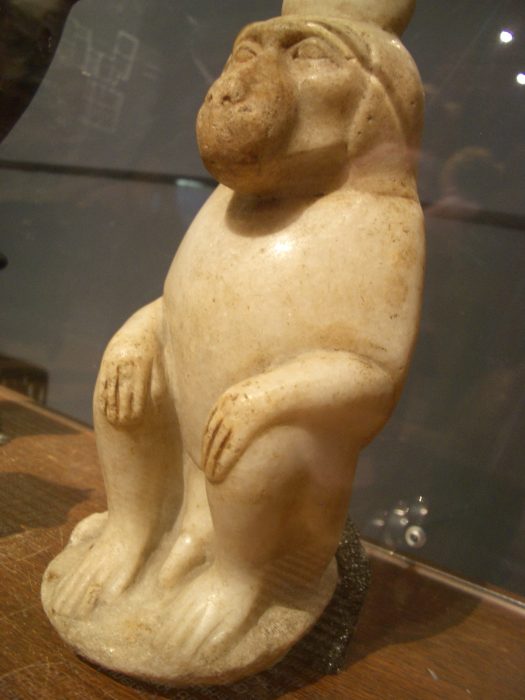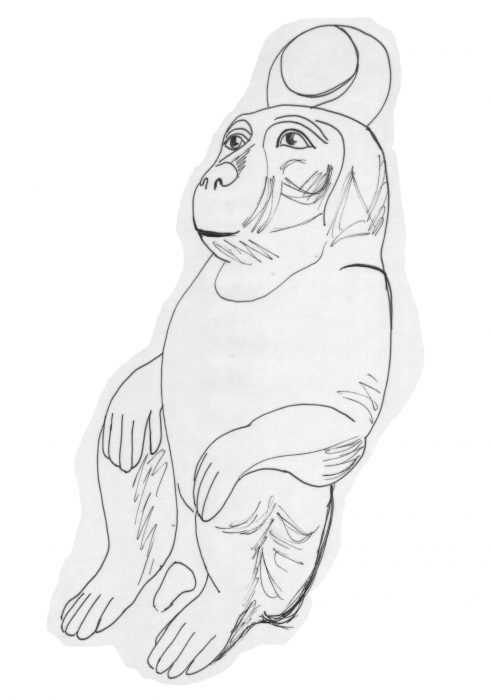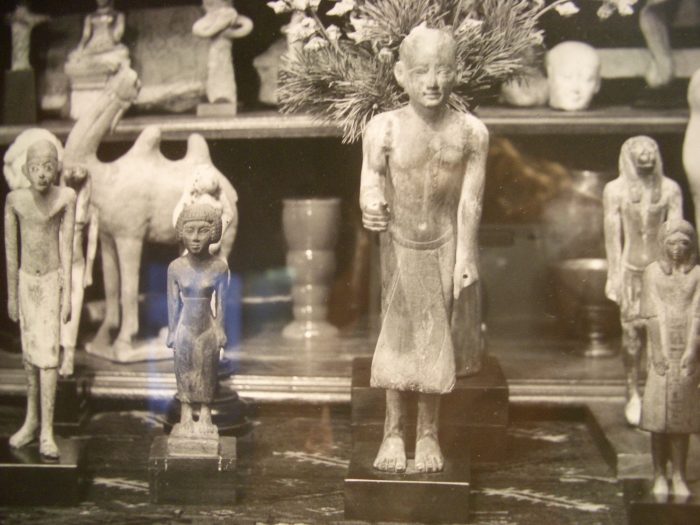Freud’s Thoth
This painting of the Egyptian god Thoth is one of my twelve smaller gilded paintings which together form Significantly Freud: Icons for a Jewish Atheist, representing twelve of my favourite artefacts from the private collection of Sigmund Freud.
As with many of the old gods, Thoth symbolised many things in ancient mythology. Thoth was the scientist, the recorder of time, the judge of truth, the patron of writing, a keeper of magic spells. He was sometimes shown as a man with the head of an ibis, holding a writing palette. The ancient Egyptians also believed that the gift of hieroglyphic writing came from Thoth. He presided at the Weighing of the Heart with Osiris. He was also credited with writing the ancient Egyptian Book of the Dead.
Freud was so intrigued by the Egyptian death rituals and writings that he learnt to read hieroglyphics. Like Thoth, Freud also tried to discover the truth behind human actions, thoughts and emotions. Like Thoth, Freud was also a writer who recorded what he discovered scientifically.

Die Wahrheit (Truth)
The painted red script, Die Wahrheit translates as “Truth”. This symbolises Freud’s quest to interpret the meaning behind all human actions.

Freud’s original marble statue of Thoth is 220 mm high from the Roman Period in Egypt, about 100 AD. Thoth was one of many statues that had prominence on Freud’s desk, where “my old and grubby gods take part in the work as paperweights.” (Janine Bourke, The Gods of Freud, p.155)
Freud finished writing The Interpretation of Dreams in 1899 and the ancient artefacts had helped Freud confirm his ideas.

One of my original sketches for this painting.
“Thoth, the ibis-headed god of the moon and intellect, was often represented as a seated baboon. The Egyptians believed the baboon was the spirit of Thoth. The orb crowning his head represents the crescent moon. After death, the Egyptians believed that Thoth, because of his scribal duties, was in charge of the scale in the Weighing of the Heart, a ceremony in which the deeds and virtues of the deceased were judged. This small statue was probably an offering during the Classical Period, when Thoth increased in popularity due to his association with the Greek messenger god, Hermes.
Freud would have been interested in the conflict between animal instinct and human intellect in Thoth’s representation as a baboon. In much of his work, Freud sought to examine the influence of instincts, such as sexuality and aggression, on the expression of intellect.” (Freud Museum, London)

Freud was obsessed with his collection of over 2000 ancient artefacts from around the world. Cylinder seals from Mesopotamia, figurines from China, statues from ancient Greece and Rome.
“Freud would come to identify the work of the psychoanalyst with that of the archaeologist, excavating away the layers of the conscious mind to find the ruined palaces and streets on which our mental lives are ultimately founded: the buried traces of memories and desires that linger on in our psychic lives.” (Benjamin Poore, Freud’s collections and “The Unconscious”, The Independent, 10 June 2015)